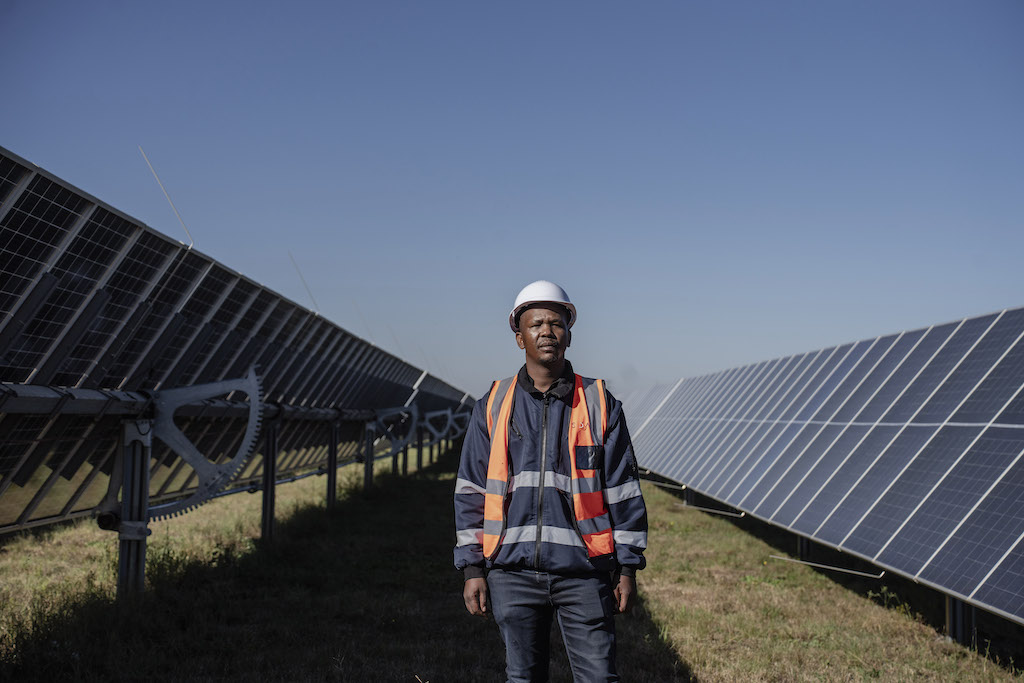
22 May Beyond the Grid: Pinging power from farms to factories
Solar power moves virtually from farmland in North West province to factories hundreds of kilometres away. How does it work, and what does it mean for the country’s energy transition? Nthusang Lefafa investigates
Photos and videos: Ihsaan Haffejee

Virtual wheeling: The Selemela Solar Park in Lichtenburg, North West, generates and sells electricity to other parts of the country via a wheeling agreement. Pictured here is plant manager Tebogo Tong. Photo: Ihsaan Haffejee
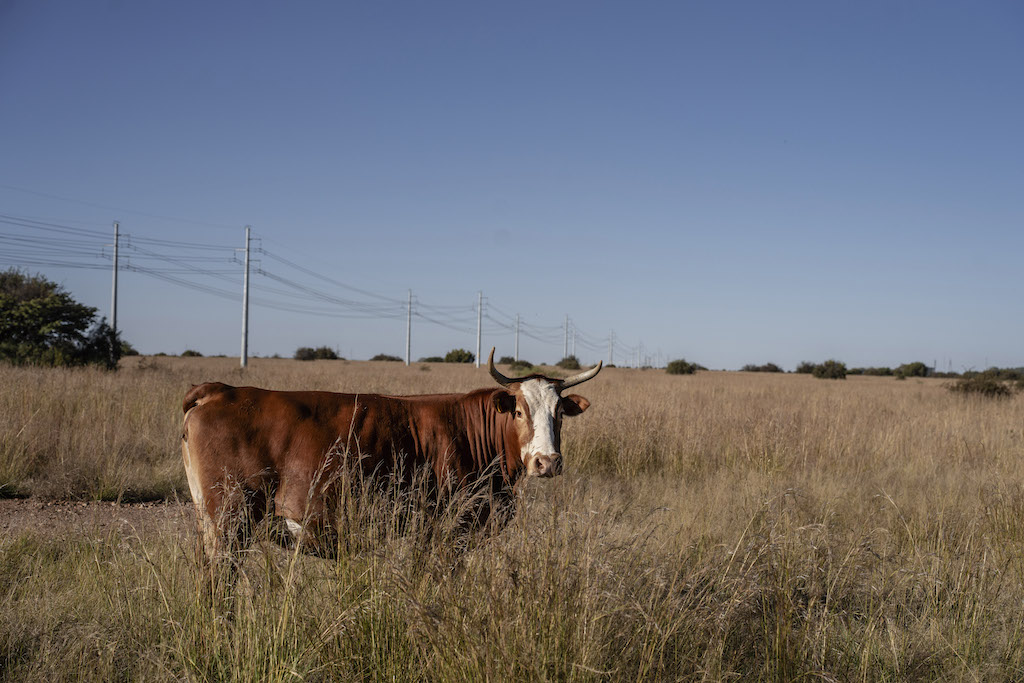
Land leases: The SOLA Group rents land for Selemela from two farmers. Photo: Ihsaan Haffejee
The practice of electricity wheeling is gaining momentum in South Africa as a pathway for companies and municipalities to transmit renewable energy using Eskom’s grid.
A large-scale solar energy facility about 15km outside the town of Lichtenburg in North West province is reshaping how this virtual transfer works.
Developed by a South African company, the SOLA Group, the project is taking place on grazing land leased from two farmers who each earn rental of about R1-million a year.
Called the Selemela Solar Park, it supplies renewable energy to factories in KwaZulu-Natal and the Western Cape via a wheeling agreement with the Eskom transmission network.
Katherine Persson, managing director of assets at the SOLA Group, says the Selemela facilities together represent one of the largest electricity wheeling initiatives in South Africa.
The project comprises two solar plants that generate about 200 megawatts per hour for the Tronox wheeling deal. A third plant still in commissioning phase will supply another 100MW to African Rainbow Minerals.
According to Persson, the scale of the project reflects its significant financial backing.
“We raised about R4.2-billion to construct them, so they are large infrastructure investments,” she said. “They were funded by a consortium of banks, including Absa, Standard Bank, Nedbank and DBSA. Additional equity finance was provided by the SOLA Group and African Rainbow Energy Partners.”

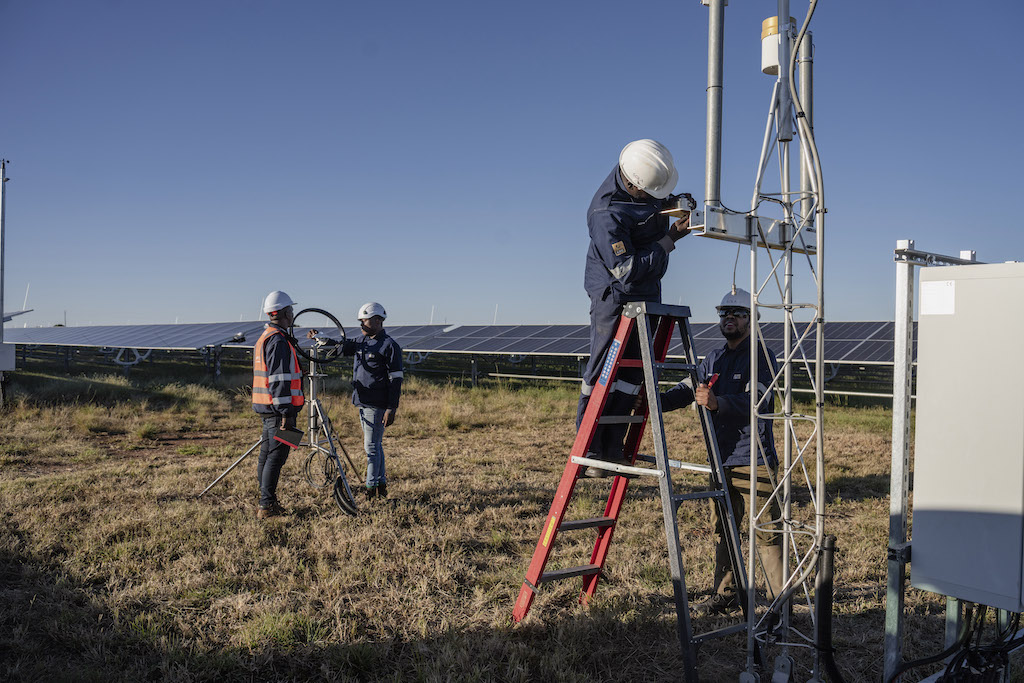
Parallel deals: Tronox Mineral Sands is the off-taker of electricity generated at Selemela, via the NTCSA. Here, workers are maintaining equipment at the facility. Photo: Ihsaan Haffejee
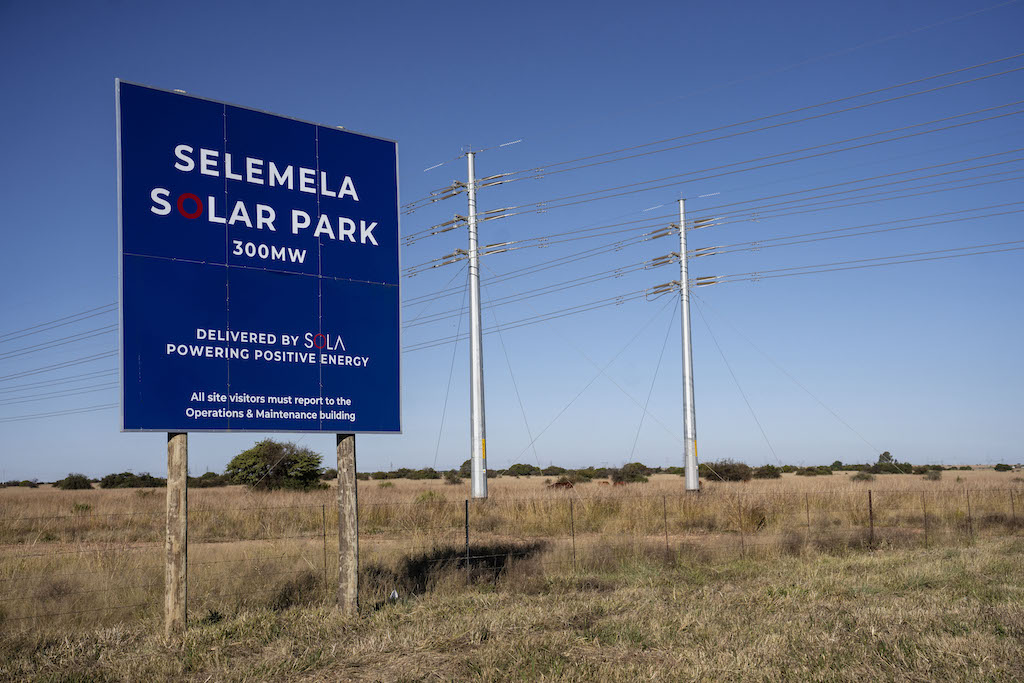
Self-build: Selemela was constructed under a self-build agreement, where the SOLA Group was responsible for building most of the project’s infrastructure. Photo: Ihsaan Haffejee
Wheeling deal
Tronox Mineral Sands, which manufactures products used in paints, plastics and paper, off-takes the electricity via the National Transmission Company South Africa (NTCSA), a recently unbundled division of Eskom responsible for managing transmission infrastructure.
“We engage with NTCSA and Eskom in parallel,” said Persson. “These projects connect at the Watershed main transmission substation, which is managed by NTCSA. So we have agreements with both NTCSA and Eskom Distribution around the grid connection for the projects.”
Building and connecting private energy projects to the grid, however, is far from simple. Selemela was constructed under a self-build agreement, where the project company is responsible for building most of the required grid infrastructure, but collaboration with Eskom and NTCSA remains essential.
“Even though you’re building most of the stuff yourself, there are still certain points where there’s interaction with Eskom, where they need to do bits of work on their side,” Persson explained.
Oxpeckers submitted a set of detailed questions to Eskom on May 7, seeking clarity on wheeling arrangements, grid readiness, regulatory alignment and infrastructure upgrades. No response was received by the time of publication.
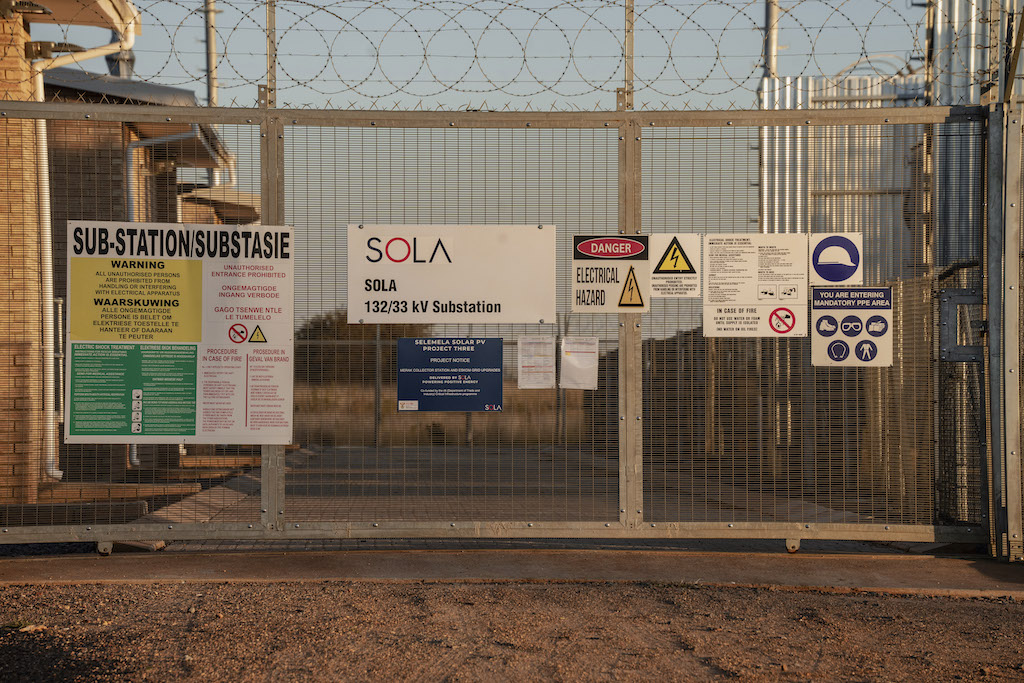
Gaining traction: Selemela is one of several projects operating under a wheeling agreement as there is an increase in these types of energy arrangements. Pictured is a substation located at Selemela. Photo: Ihsaan Haffejee
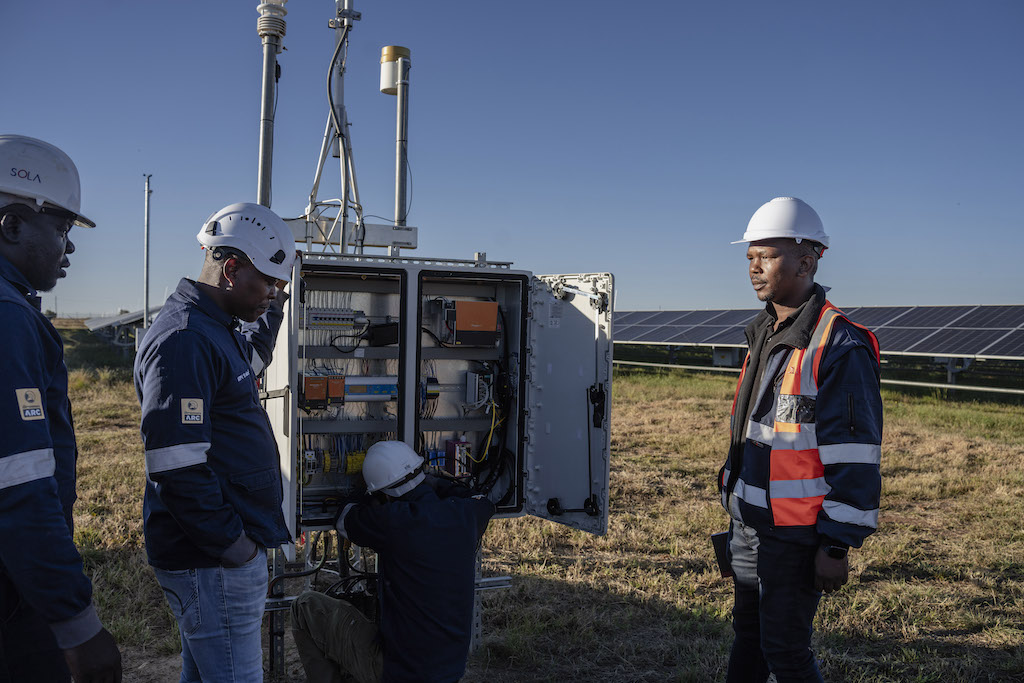
Unlocking investment: Wheeling projects in South Africa are paving the way for a liberalised energy market. Pictured here is plant manager Tebogo Tong (right) and SOLA Group workers maintaining equipment. Photo: Ihsaan Haffejee
Growing trend
The Selemela project is part of a growing trend in South Africa’s energy landscape.
Eskom recently launched its Virtual Wheeling platform as a commercial product, marking a breakthrough in how renewable energy is transmitted to end-users. The platform, co-developed with Vodacom subsidiary Mezzanine, simplifies billing and reconciliation for off-takers, making wheeling more accessible for large companies with distributed operations.
It forms part of broader reforms unveiled alongside a new national wheeling framework recently approved by the National Energy Regulator of South Africa. Together, these reforms are widely seen by commentators as a major step toward liberalising the energy market and unlocking large-scale private investment.
Municipal transitions
Nhlanhla Ngidi, head of energy and electricity at the South African Local Government Association (SALGA), said municipalities are joining the virtual trend by slowly transitioning from electricity resellers to facilitators of third-party wheeling.
“More than 40 municipalities currently have wheeling contracts with Eskom,” he said. This is progress since a 2023 #PowerTracker investigation that found only four municipalities had operational wheeling systems at the time: Nelson Mandela Bay, Ekurhuleni, City of Cape Town and George.
Ngidi said SALGA had contributed to the national wheeling framework and has provided municipalities with training and guidelines to implement it.
However, Eskom has warned that wheeling through municipal grids is only permitted in areas where municipalities are up to date with their Eskom payments. “The concerns are around security of payments for IPPs. Some alternative arrangements such as escrow accounts have been identified as a solution,” Ngidi said.
While SALGA was not involved in the Lichtenburg project under Ditsobotla Local Municipality, Ngidi said these projects highlight the financial potential of wheeling. “If the municipality signs the wheeling agreement, it won’t completely lose revenue from the customer receiving the power. There is revenue to be made through wheeling, which will cover the lost income,” he said.

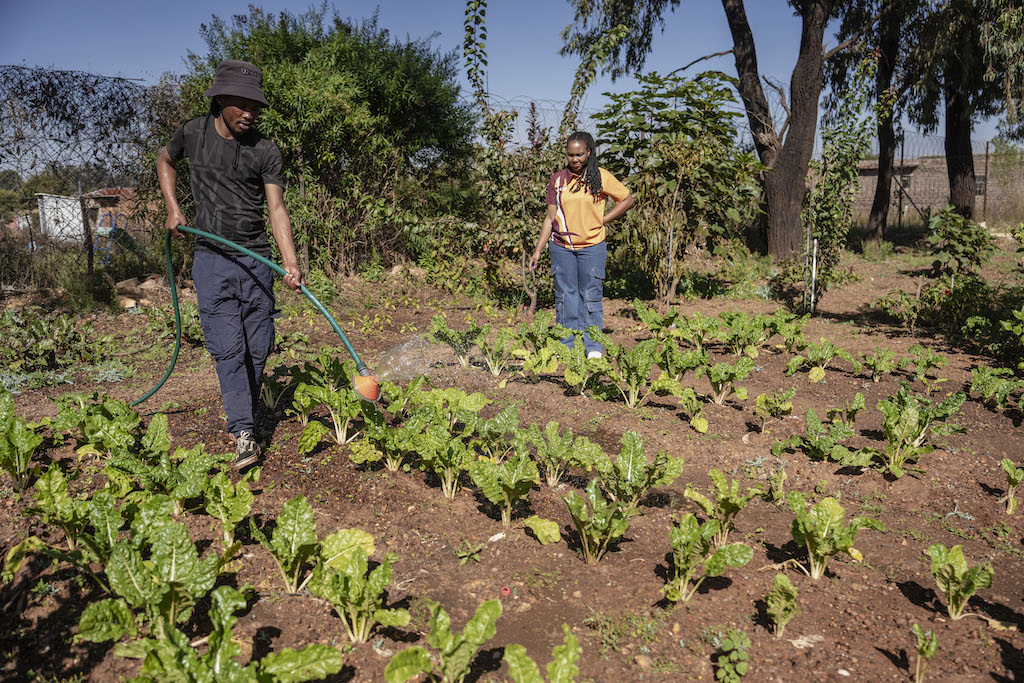
Feeding local communities: General worker Gift Serai and department head Lee Serongwane working in a community vegetable garden at Treasure Trove Primary School in the village of Bakerville, near Lichtenburg. Photo Haffejee
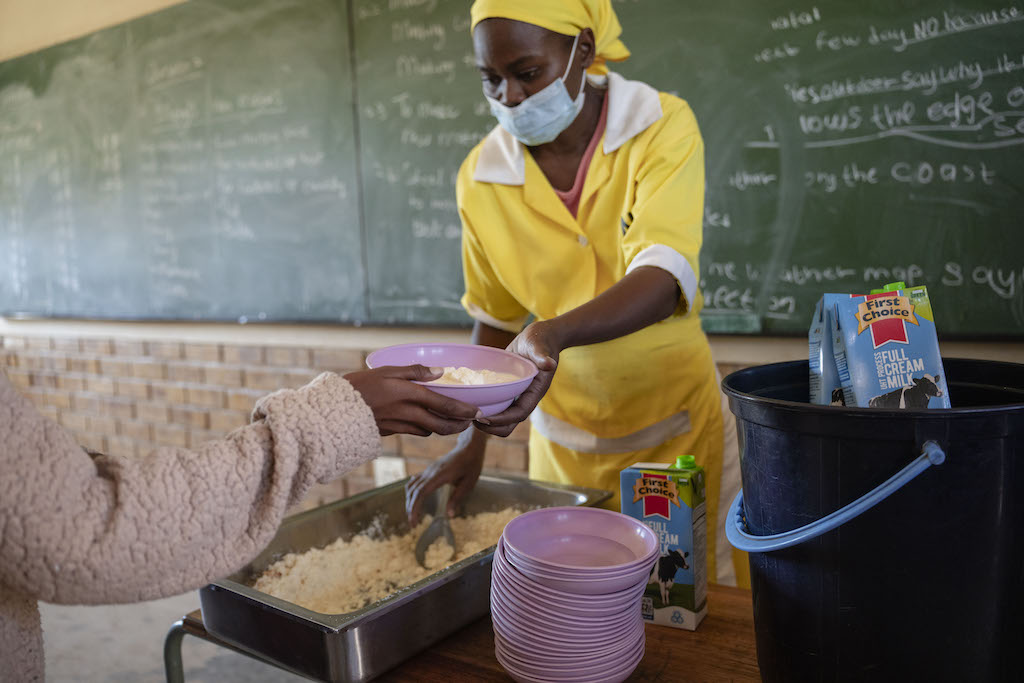
Helping hands: A worker hands out a meal to students in bowls donated by SOLA Group to Treasure Trove Primary School. This is one of the various community-based initiatives run by the company. Photo: Ihsaan Haffejee
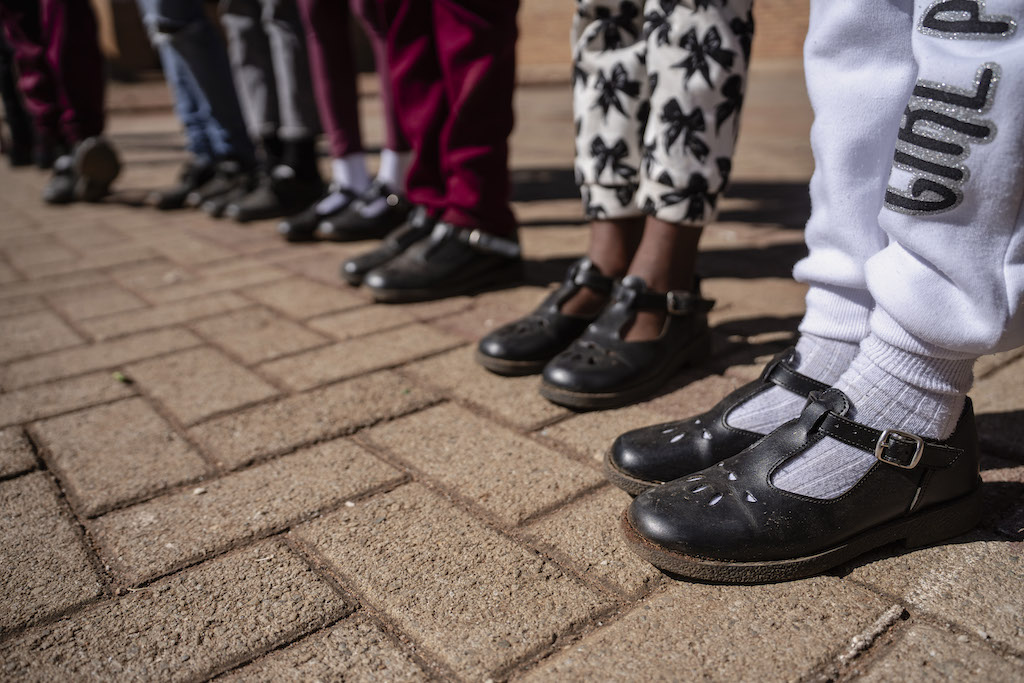
No bare feet: Learners wearing school shoes donated to Treasure Trove Primary School. Photo: Ihsaan Haffejee
Community benefits
There are direct and indirect benefits that flow into local communities from wheeling projects in the form of job creation, investments and enterprise development – with the potential to uplift rural communities and support vulnerable groups.
As a private project that was not developed under the government’s Renewable Energy Independent Power Producer Procurement Programme (REIPPPP), Selemela Solar Park does not include a formal community trust. However, the project has implemented various social impact initiatives.
“The landowners are one of our most critical partners in the project,” Persson said. “It’s important for us to maintain good relations with them and with all the local community stakeholders.
“About R335-million has gone directly into procuring goods and services in the local community, and in addition to that around R7-million has been spent on community investment,” she said.
Working through a project liaison committee, the project has provided 305 educational opportunities and established a stakeholder engagement structure to ensure ongoing community support and dialogue.
“The project liaison committee consists of members of the community and representatives from the provincial government. We focus mostly on healthcare, education and infrastructure,” explained Janine Bergstedt, economic development administrator at the SOLA Group.
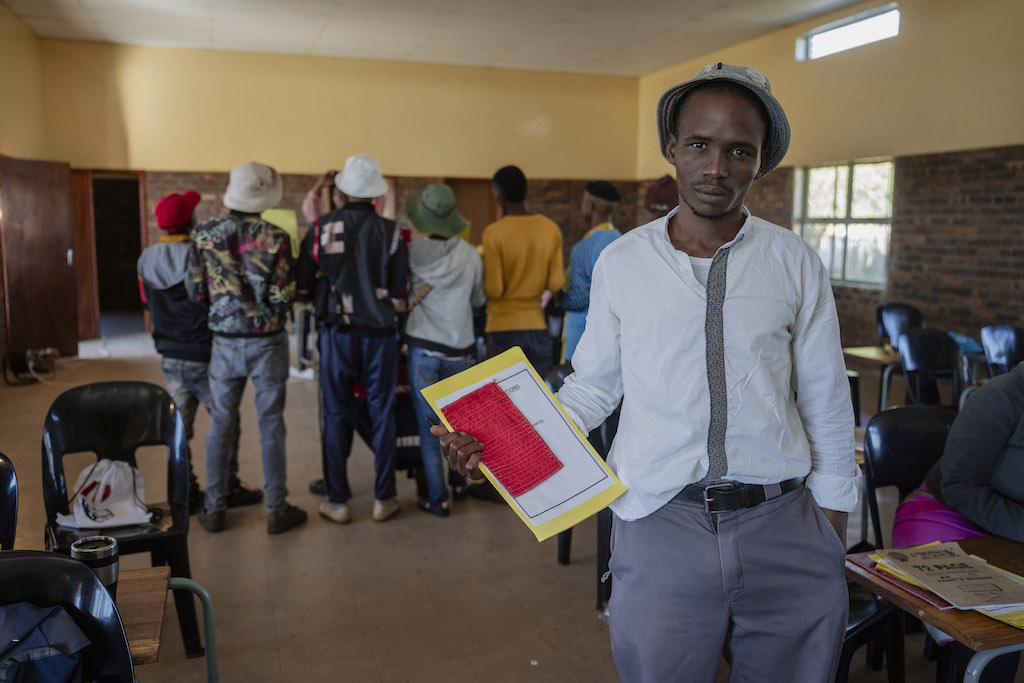
Working together: Letlhogonolo Mabitso is one of the community members participating in a sewing and fashion design skills programme at the Grasfontein Community Hall. Photo: Ihsaan Haffejee
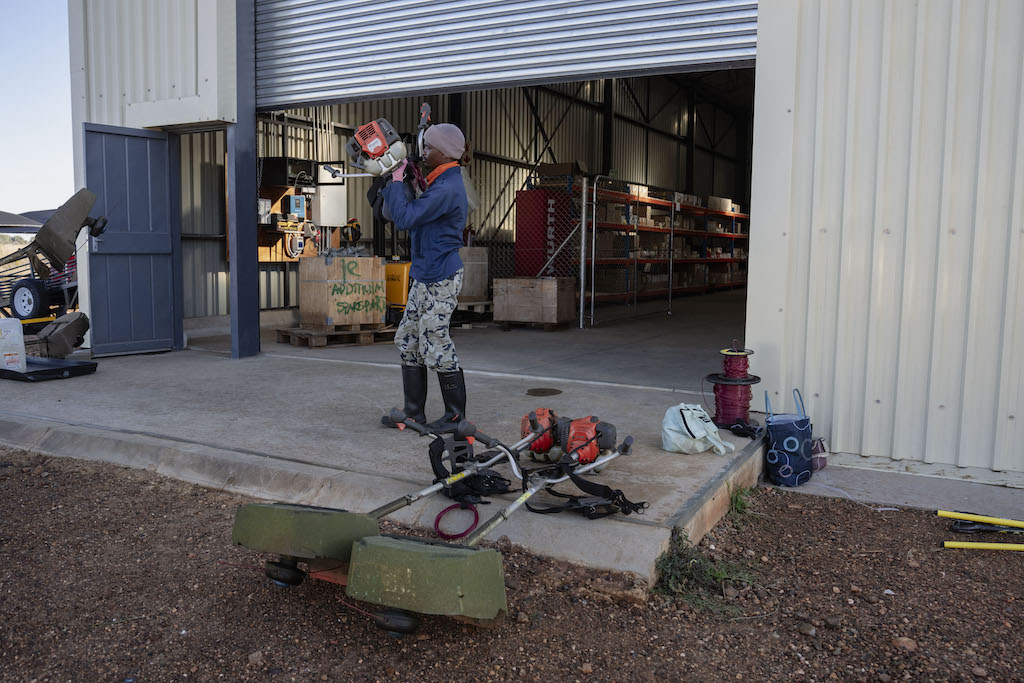
Local contracts: A local service provider gets ready to cut the grass around Selemela. Photo: Ihsaan Haffejee
Formal education
Letlhogonolo Mabitso, who lives in the neighbouring community of Grasfontein, about 10km from the solar park, was unemployed and had no hope of receiving formal education. Today, he is one of 30 adults enrolled in a three-month sewing and fashion design skills course at the Grasfontein Community Hall — a facility renovated by Selemela’s developer, WBHO, and the SOLA Group.
Once he and his peers complete the course, they plan to start selling school uniforms to nearby schools. Mabitso said they’ve already started a five-member cooperative, and the income will soon begin circulating within their community.
Bergstedt said this is just one of many initiatives. Communities in Ward 16 have benefitted from school internet installations, nutrition programmes and school supplies such as shoes and bags for learners.
“It’s always important to have a healthy relationship with the communities we work in and know what their needs are in order to do a thorough community needs analysis,” she said.
Tshepo Oliphant, economic development officer at the SOLA Group, said the project created over 800 temporary jobs for community members during construction. “This was mostly general workers. We also had the workers trained in health and safety,” he said.
Through a partnership with the provincial Department of Economic Development, Environment, Conservation and Tourism, local service providers also received mentorship and training.
“Some of the local contractors that continue to benefit from the solar project are those who are doing solar panel washing and grass cutting. All of the buildings on the site, like the warehouse and maintenance building, were built by local contractors,” Oliphant said.

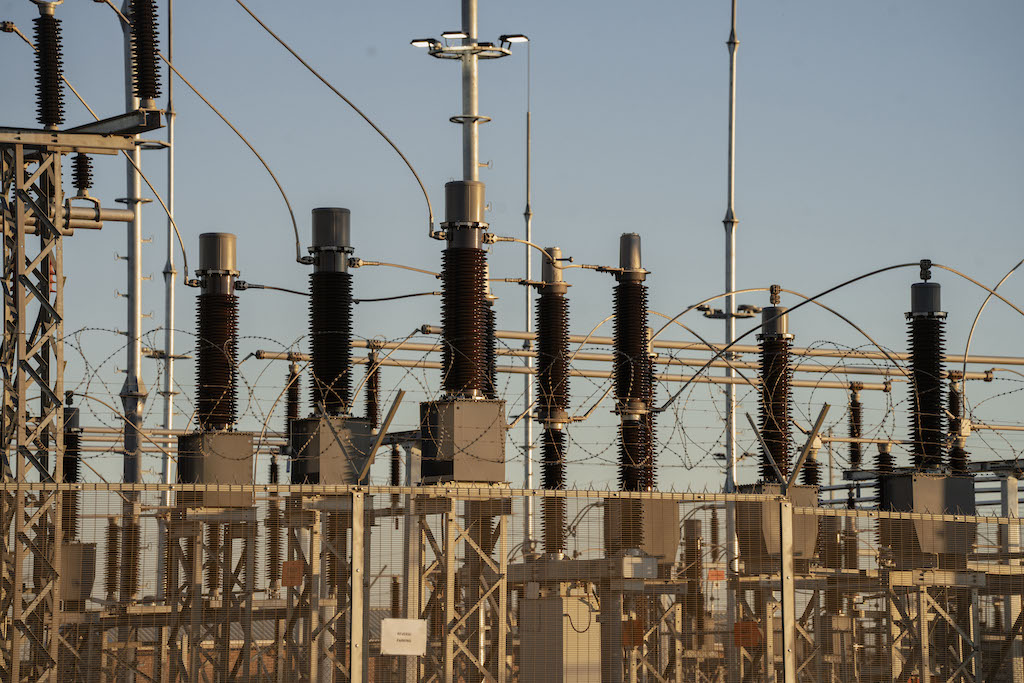
Exporting energy: Power generated at Selemela travels underground to the substation, and is directly linked to the Eskom national grid. Photo: Ihsaan Haffejee
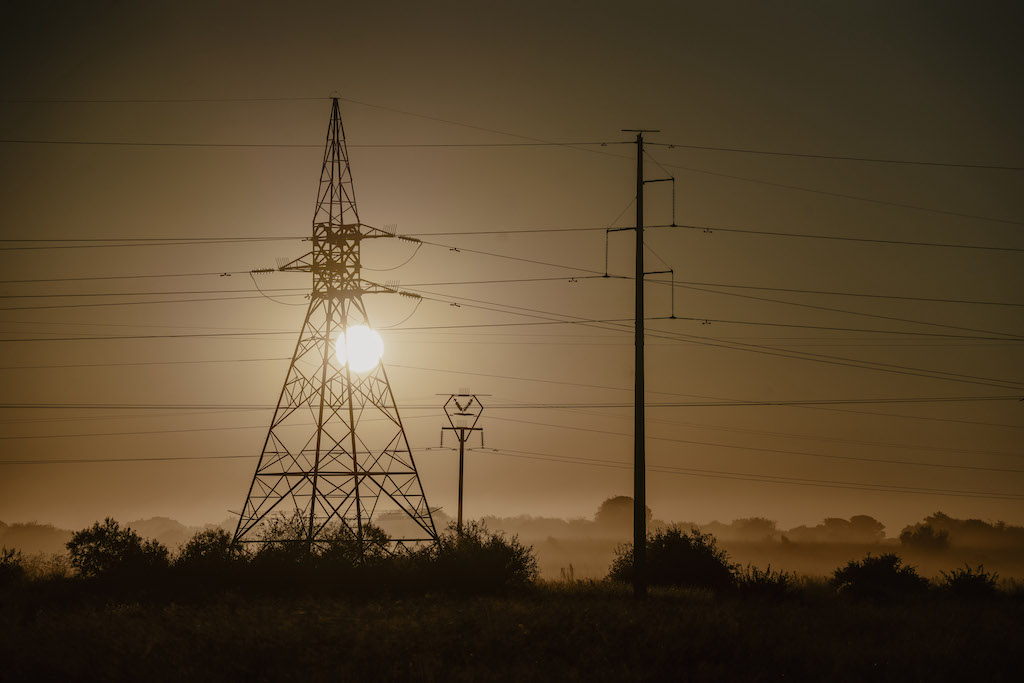
Electrical powerlines near Selemela carry electricity from the substation to the Eskom national grid. Photo: Ihsaan Haffejee
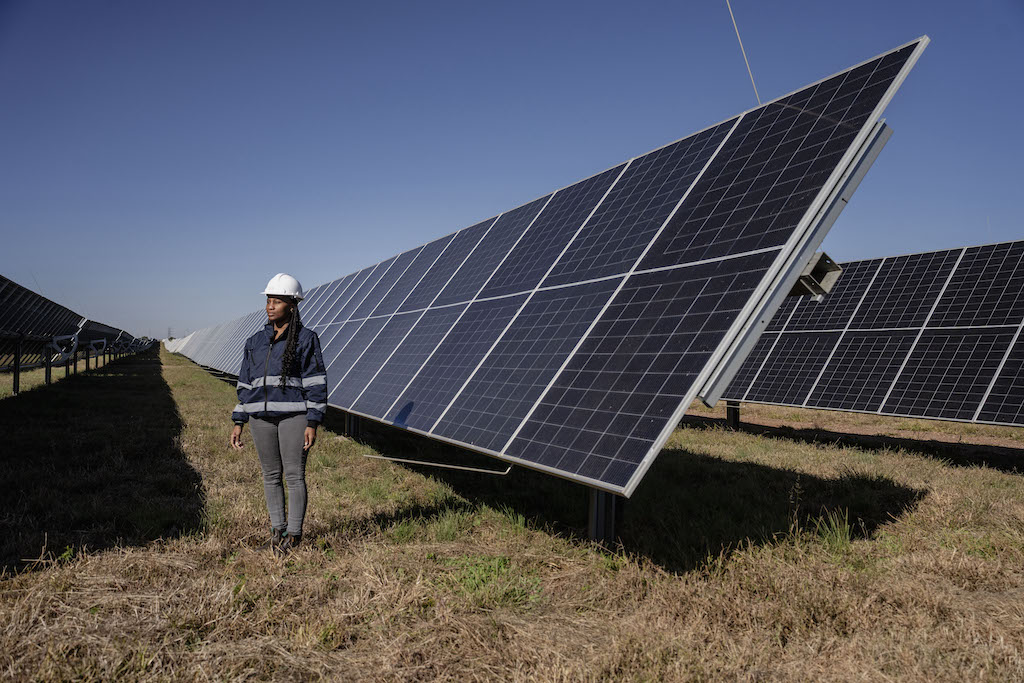
Toll fee: Tronox Mineral Sands buys power from Eskom, which is generated by Selemela. Pictured here is Mothokwa Maredi, the health, safety and environment officer at Selemela. Photo: Ihsaan Haffejee
Power flows
Tebogo Tong, plant manager at Selemela, explained how power flows from the more than 390,000 bifacial solar panels at the plant to the national grid.
“You get the resource which is your sun getting absorbed by the solar panels, going through inverters at transformer stations,” he said. “At the transformer stations, that is where the power is converted from DC (direct current) to AC (alternating current). Then from there, it goes through underground cables to the substation. From the substation, it’s then linked to the Eskom national grid through their transmission lines.”
The solar park is equipped with a metering system that records how much energy is exported, which is then offset against how much the buyer consumes.
“The buyer has a wheeling agreement with Eskom, and they pay a fee for that. It’s the same as when you are utilising the road from here to Johannesburg – you’re going to be paying some toll gates to utilise the road. That is how the power is transmitted,” Tong said.
Questions sent to Tronox on May 9 about its role as the off-taker in the wheeling deal remain unanswered.
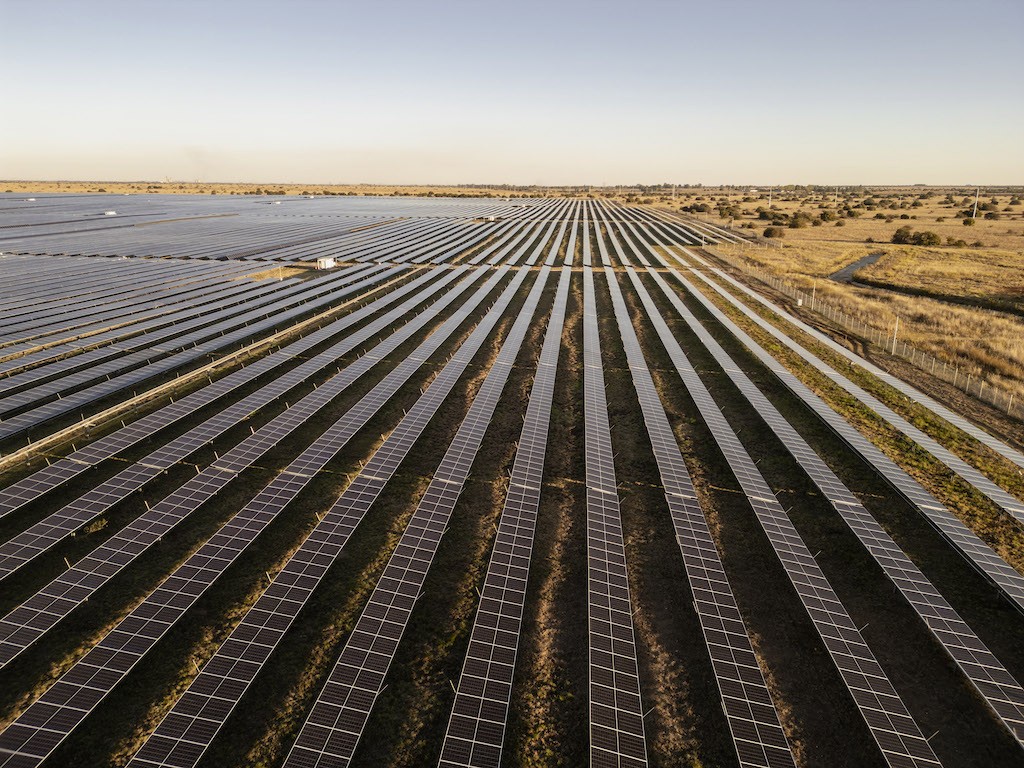
Future plans: Selemela is an example of what the shift to greener energy could look like. Photo: Ihsaan Haffejee
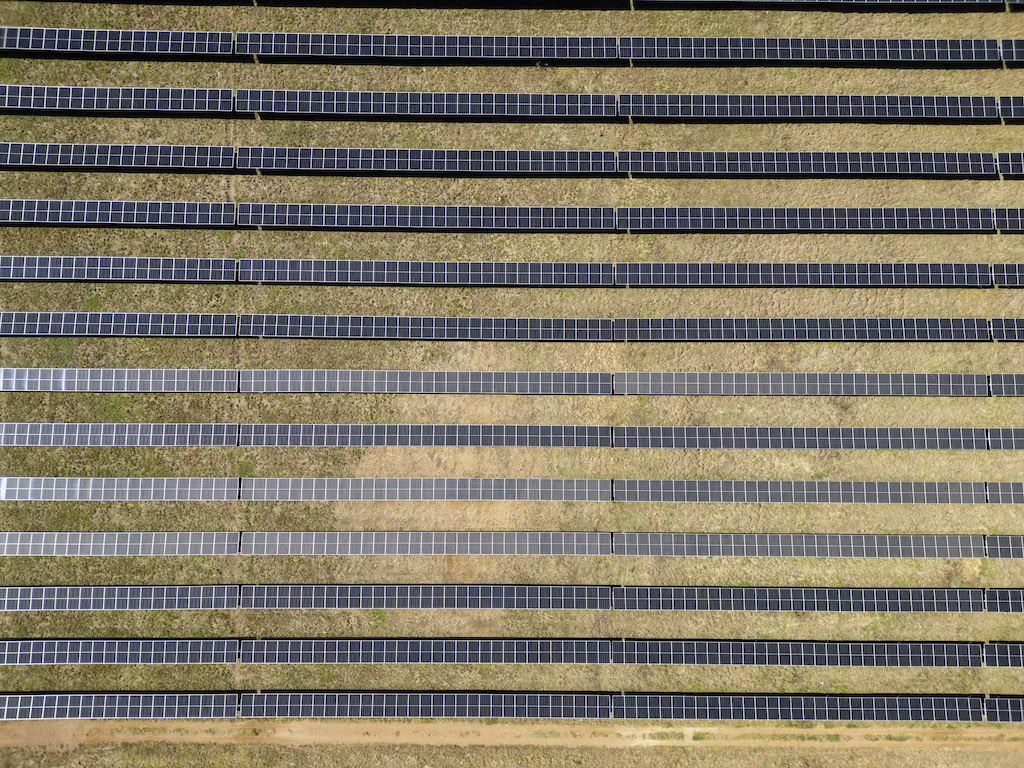
Working together: There are several power companies working towards a greener future. Pictured here is an aerial view of Selemela. Photo: Ihsaan Haffejee
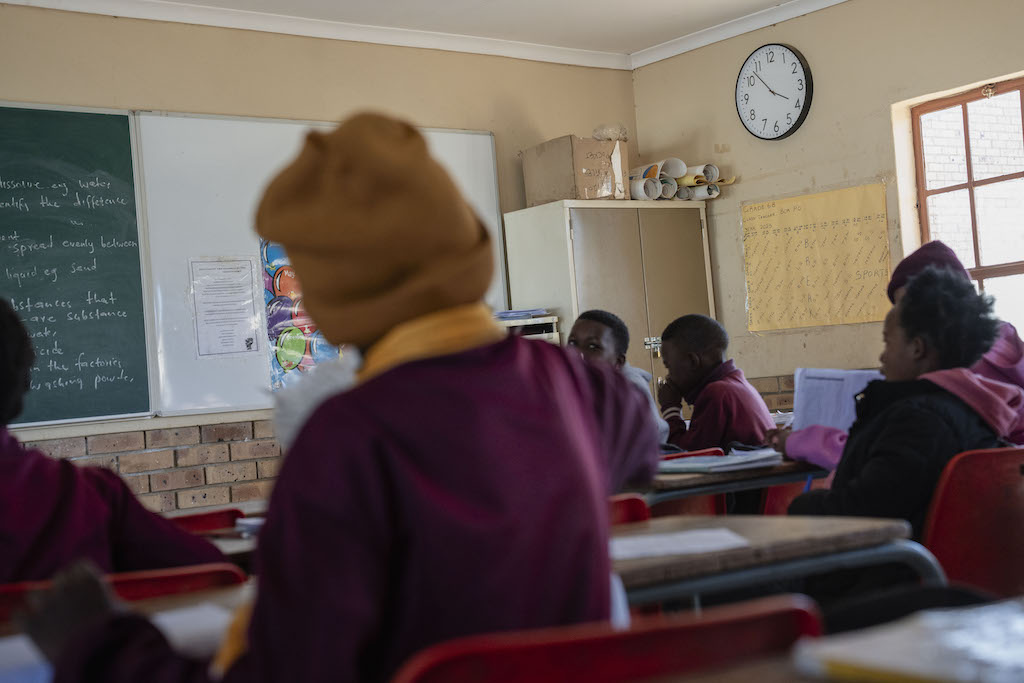
Serving community: A significant part of the energy shift is working with local affected communities to ensure that they benefit from greener technology. Photo: Ihsaan Haffejee
Greener energy
As South Africa accelerates its shift towards greener energy, the solar park offers a glimpse into what the future of electricity could look like — decentralised, decarbonised, and community-aware. It shows how wheeling can unlock private investment, stimulate rural economies and chart a path beyond coal.
“The renewable energy industry is quite small, so all the companies know each other. And what we’re seeing now is that there are other projects who are coming after us,” said Persson. “Some of them are facing similar challenges to the ones that we faced during the construction and commissioning of these projects. We’re happy to share our experiences with others.
“Ultimately the whole industry works together. We’re just trying to support each other to deliver projects,” she said.
This investigation was supported by the African Climate Foundation’s New Economy Hub
- Find details about wheeling and other renewable energy projects on the Oxpeckers #PowerTracker digital tool here
